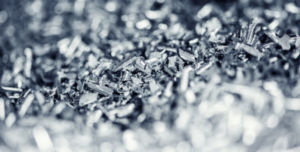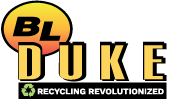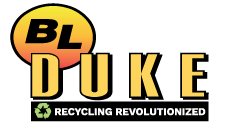
After three months of increasing prices, April showers have brought a market cooldown – with supply now outpacing demand in both the ferrous and non-ferrous scrap sectors. A combination of slower export demand, higher scrap metal inventories, and ongoing trade policy uncertainty led to this month’s price decline.
Chicago’s Ferrous Scrap Market
Chicago’s ferrous scrap market weakened in April, with prime grades falling by $20 per gross ton. Cut grades saw a decline of $30 to $35 per gross ton, steel turnings dropped by $30, and shred experienced the steepest decrease, down $40 per gross ton. This price shift followed a frenzied buying spree in the first quarter, fueled by concerns over potential tariffs. Buyers moved quickly to secure both scrap and finished steel imports ahead of any policy changes, temporarily driving up demand and supporting higher prices. However, as inventories grew and urgency faded, the market corrected itself in April, leading to widespread price declines across most ferrous grades.
“What goes up must come down,” states Lou Plucinski, President. “After three months of price increase the scrap market is in a natural correction and we’re now seeing supply outpace demand across both ferrous and non-ferrous markets.”
Export activity, which had helped support pricing in recent months, is also slowing. Turkish demand has weakened amid both seasonal and political disruptions. The observance of Ramadan typically dampens buying activity, but this year it was compounded by heightened political turmoil. On March 19, Istanbul’s mayor, Ekrem İmamoğlu, was arrested in a high-profile corruption probe just before announcing his presidential candidacy. The incident triggered political unrest and further undermined confidence in the region’s steel and scrap markets, contributing to a pullback in Turkish imports.
Tariff Uncertainty Returns to the Market
 On April 2, the White House proposed a sweeping set of tariffs, including a 10% universal import duty and a 125% tariff on Chinese goods, sparking an 84% retaliatory tariff from China. While recycled materials were included in the scope, steel, aluminum, and energy-related imports remained exempt. These measures have since been paused, but their potential impact continues to weigh on the market.
On April 2, the White House proposed a sweeping set of tariffs, including a 10% universal import duty and a 125% tariff on Chinese goods, sparking an 84% retaliatory tariff from China. While recycled materials were included in the scope, steel, aluminum, and energy-related imports remained exempt. These measures have since been paused, but their potential impact continues to weigh on the market.
With the trade environment shifting again, uncertainty remains a key theme for the scrap industry. Tariff volatility, global trade tensions, and shifting enforcement timelines could impact both domestic scrap demand and international export activity.
Chicago’s Non-Ferrous Scrap Market

Despite these headwinds, Chile – the world’s top copper producer – reported a modest increase in copper output for the first quarter of 2025. Although faced with challenges like a nationwide power outage and ongoing trade uncertainties, state-owned Codelco remains optimistic about long-term demand, fueled by the global transition to renewable energy. Chile’s Mining Minister, Aurora Williams, noted that even with new tariffs in place, Chile’s comparatively lower tariff rate could improve its competitive standing in the global market.
Analysts are divided on the future of copper prices. Some foresee further declines due to trade disputes and slowing economies, while others expect rising demand tied to clean energy initiatives and electric vehicle growth to push prices higher.
Meanwhile, stainless steel prices also dropped significantly this week, following a more than 10% week-over-week decline in LME Nickel prices – the lowest level since September 2020. Market conditions are bleak. Stainless steel demand remains weak, and growing uncertainty from ongoing tariff conflicts has led many buyers to the sidelines. Exporters are hesitant to purchase material, uncertain about how the market might shift while shipments are in transit. Most industry players don’t expect any price recovery until LME Nickel shows signs of upward momentum.
also dropped significantly this week, following a more than 10% week-over-week decline in LME Nickel prices – the lowest level since September 2020. Market conditions are bleak. Stainless steel demand remains weak, and growing uncertainty from ongoing tariff conflicts has led many buyers to the sidelines. Exporters are hesitant to purchase material, uncertain about how the market might shift while shipments are in transit. Most industry players don’t expect any price recovery until LME Nickel shows signs of upward momentum.
Aluminum is following a similar trend – while domestic mill and smelter demand remains lukewarm, there is still availability for May delivery appointments. However, prices have dropped nearly 12% month-over-month, reflecting the decline in LME aluminum prices. On March 12, 2025, the U.S. imposed a 25% tariff on all steel and aluminum imports, ending previous exemptions for key trade partners, including Canada and the European Union. Despite these headwinds, analysts still expect aluminum to be the top-performing base metal on the London Metal Exchange in 2025, driven by a projected supply shortfall. A year-over-year average price increase of 6.3% is forecasted.


